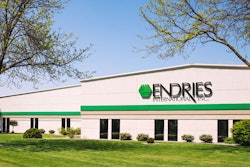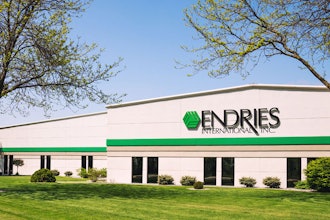
In September of 2013, the IRS issued regulations required to be employed on 2014 tax year returns that created guidelines for treatment of tangible property expenditures, whether personal or real property. These new tangible property regulations (TPRs) provide guidance on the capitalization and depreciation of capital expenditures, the treatment of materials and supplies, and the opportunity to write off all or a portion of an asset when disposed. They present new risks and opportunities that affect taxpayers in every industry that either owns depreciable capital assets, spends funds on repairs and maintenance, and/or material and supplies.
This two-part editorial will inform you of potential requirements related to these tangible property regulations for your 2014 return. Mueller Prost has also created a video series to help breakdown these complex regulations. You can view it here.
In the first part of our article, we began to discuss IRS issued regulations required to be employed on 2014 tax year returns and the subsequent guidelines for treatment of tangible property expenditures. The following information is the conclusion of that article.
Routine Maintenance Safe Harbor (RMSH)
The IRS offered some opportunities in the regulations by acknowledging that taxpayers do incur expenditures that assist in keeping a U of P in its efficient operating condition. As a result, the IRS created the RMSH rule that allows taxpayers to expense certain costs that are routine and reoccur at specific times during the use of the U of P. For personal property, an activity is reoccurring if you expect to do it more than once during the applicable class life of the U of P. The RMSH has special rules for buildings and their structural components.
In the case of a building and/or its components, the expenditure can be treated as a repair if one reasonably expects to perform it more than once over a 10 year period of time.
De Minimis Safe Harbor (DMSH) to acquire property
When a taxpayer purchases a U of P, generally capitalization is required; however, the IRS provided some relief under the TPRs by creating a DMSH exception. This exception allows taxpayers to immediately deduct amounts they pay to acquire or improve property, if the taxpayer complies with all of the DMSH rules. The DMSH rules can be applied by all taxpayers if these rules are met:
- A capitalization policy is in place before the tax year starts. This policy must specify that an expenditure is under a certain dollar amount.
- The taxpayer must have an invoice and deduct the expenditure on its books.
Under the regulations, taxpayers who have an applicable financial statement (AFS) are granted safe harbor to be able deduct up to $5,000 of the cost of an item of property (per invoice) or expenditure. For those who do not have an AFS, the $5,000 safe harbor is reduced to $500 per item. Although the regulations state the $5,000/$500 as safe harbor limits, the capitalization policy should be set to an appropriate level for your business. During an IRS audit, the taxpayer has the burden of proving to the IRS that the amount paid in excess of the safe harbor was reasonable. The DMSH is a safe harbor and not a restricted ceiling limitation.
Disposals
Taxpayers have the opportunity to partially dispose of duplicate portions of property, including buildings and their structural components. Historically, for example, if one replaced a roof on a building and capitalized the replacement costs, the taxpayer was not allowed to dispose of the prior roof. Under the TPRs, a taxpayer can elect to dispose of the prior roof. These partial asset dispositions provide an opportunity to write off duplicate assets for tax years prior to 2014 and are only available through the filing of the 2014 tax forms.
Materials and Supplies
Materials and supplies (M & S) are defined as tangible property, excluding inventory, which is used or consumed in operations and is either:
- A component acquired to maintain, repair or improve a unit of tangible property,
- bulk, such as fuel, water, lubricants and similar items that are reasonably expected to be used in 12 months or less,
- temporary or emergency spare parts,
- units of property whose useful life is 12 months or less, or
- a U of P with a cost less than $200.
EXAMPLE: Bob’s Wood Shop has temporary machine parts and bulk wood treatment on hand at tax year end 2014, that are above its DMSH. Bob’s has to defer these items and not take as tax deduction in 2014.
Once an item is determined to be M & S, the regulations require a taxpayer to classify these as either incidental or nonincidental. Incidental materials and supplies can be deducted when they are purchased. On the other hand, nonincidental materials and supplies are required to be deferred and deducted in the year they are used or consumed. Taxpayers are required to defer and keep a physical inventory or a record of consumption for its nonincidental M & S no later than tax year 2014. This rule is trumped, and up to the taxpayer’s DMSH. Taxpayers must review and adapt their accounting by tax year 2014 to conform their treatment of M & S to the TPRs. Regulations address various aspects of Materials and Supplies. Please contact us to discuss how these rules may affect you.
Partial Asset Disposition (PAD)
In August of 2014, the IRS issued final regulations allowing taxpayers to take partial asset dispositions. For one time only in 2014, taxpayers are allowed to take a loss for prior year’s asset dispositions. This could be a significant benefit that you do not want to miss.
EXAMPLE: A building owner built a building in 2002. In 2010, the owner capitalized costs incurred for a new HVAC. After applying the new capitalization criteria tests, it was determined that the owner properly capitalized the costs of the HVAC. The owner now has two HVACs. With this limited opportunity, the owner can, in 2014, deduct the net book value of the initial HVAC.
While the new regulations are complex, understanding how they impact your business is critical to maximizing tax deductions while maintaining tax compliance.
Past decisions regarding M & S expenditures, as well as the capitalization or write off of R & M must be reviewed to determine what changes are necessary under the new regulations. These changes will require the filing of certain IRS tax forms no later than tax year 2014 while other changes are either new annual elections or choices.
For additional information and to discuss how these regulations may impact you, contact Mueller Prost here. Information about author Teri Samples is available here.























